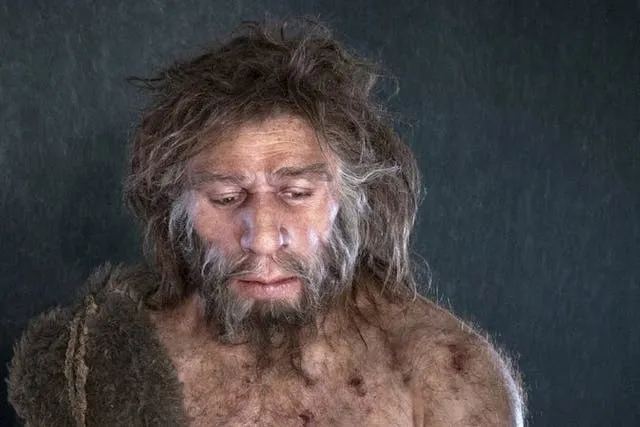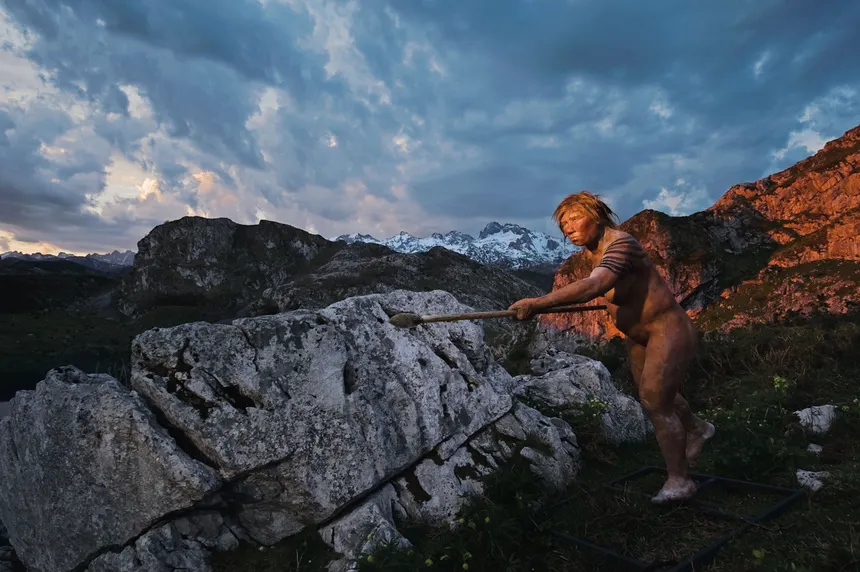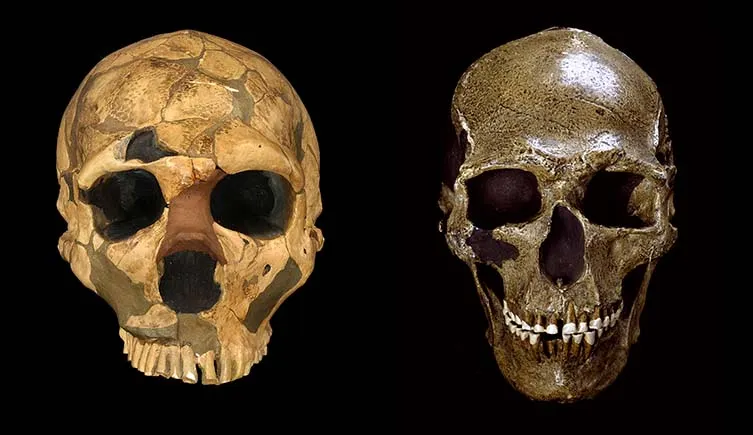Neanderthals: Our Closest Cousins and the Mystery of Their Extinction

The Neanderthals (Homo neanderthalensis) were a distinct human species that lived in Europe and parts of western Asia for over 300,000 years. They were our closest extinct relatives, sharing 99.7% of our DNA. Far from the brutish cave dwellers they were once thought to be, modern science now paints a picture of Neanderthals as intelligent, adaptable, and even artistic beings.
So why did they disappear roughly 40,000 years ago? Their extinction remains one of the most intriguing mysteries in human evolution. Was it climate change, competition with Homo sapiens, or something else? Let’s explore their world—and their end.
1. Neanderthal Origins and Evolution
Neanderthals evolved from earlier hominins in Europe and the Middle East, likely stemming from Homo heidelbergensis. They adapted to cold climates, developing:
- Robust bodies with short limbs to conserve heat
- Large noses to warm and humidify cold air
- Strong muscles and stocky builds suited to Ice Age life
They lived during the Middle Paleolithic period, spreading across Europe from Spain to Siberia.
2. Intelligence and Culture
For decades, Neanderthals were unfairly dismissed as primitive. However, archaeological evidence shows they were:
- Toolmakers: Crafted complex stone tools (Mousterian industry) using prepared-core techniques
- Hunters: Skilled big-game hunters who used spears and coordinated strategies
- Fire users: Controlled fire for warmth, cooking, and protection
- Symbolic thinkers: Created jewelry from eagle talons, painted caves, and possibly had burial rituals
- Caretakers: Supported elderly and injured group members
Recent studies even suggest they had language capabilities, with a vocal tract and brain structure similar to ours.

3. Neanderthal-Human Interactions
Around 60,000–50,000 years ago, anatomically modern humans (Homo sapiens) began migrating into regions where Neanderthals lived. Genetic evidence shows that they interbred, meaning that most modern non-African humans carry about 1–2% Neanderthal DNA.
These interactions may have included:
- Cultural exchange
- Genetic mixing
- Territorial conflict or competition
Despite this, Homo sapiens eventually replaced Neanderthals across Europe and Asia.
4. Theories of Extinction: What Happened?
Neanderthals went extinct approximately 40,000 years ago. No single cause is confirmed, but several overlapping factors likely contributed:
a. Climate Change
Abrupt shifts in Ice Age climate led to environmental instability. Neanderthals, specialized for cold ecosystems, may have struggled with habitat loss and changing prey populations.
b. Competition with Homo sapiens
Modern humans were more socially organized, had more efficient tools, and possibly outnumbered Neanderthals. This may have led to:
- Resource competition
- Displacement from key habitats
- Faster population growth for sapiens
c. Interbreeding and Absorption
Rather than total extinction, some scientists propose genetic absorption. Interbreeding may have reduced the distinct Neanderthal population over time, merging them into the larger Homo sapiens gene pool.
d. Smaller Population Size
Neanderthal groups were small and isolated, making them vulnerable to:
- Inbreeding
- Disease outbreaks
- Sudden ecological changes
5. What Neanderthals Left Behind
Though extinct, Neanderthals left a lasting impact:
- Genetic legacy: Their genes influence modern traits such as skin tone, immune responses, and even risk for certain diseases
- Archaeological marvels: Burial sites, tools, art, and cave dwellings
- Scientific inspiration: Ongoing discoveries that reshape our understanding of human evolution
Projects like sequencing the Neanderthal genome continue to revolutionize anthropology, shedding light on everything from disease evolution to early human migration.

Conclusion: A Species Lost, But Not Forgotten
The Neanderthals were not evolutionary failures, but resilient humans who thrived for hundreds of thousands of years in harsh environments. Their extinction was not a single dramatic collapse, but likely a gradual process of integration, displacement, and environmental pressure.
Today, as we unravel their mysteries, we are not just learning about an ancient people—we’re learning more about ourselves.




